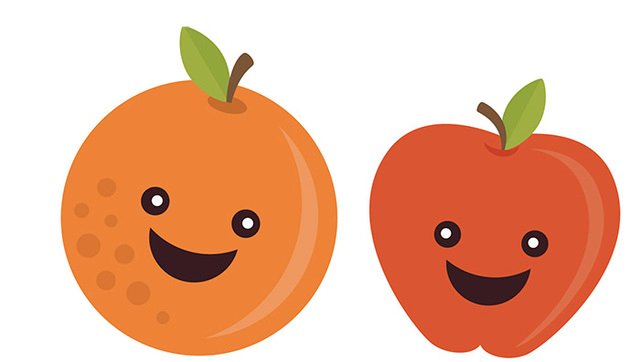
Cur-what-now? Let’s take a closer look at this word and see what it means.
Almost every country in the world uses their own type of money.
You can think of these as different types of fruit.
Imagine that Japan grows lots of oranges and India grows lots of apples. When people want to get something, they exchange their own type of fruit for the things they want. For example, if you want a laptop, you exchange oranges in Japan and apples in India.
Also, each country is of different size. Japan is a small country and can grow 10 oranges per day. India is huge and can grow 1,000 apples per day.
Think back to supply and demand – if there is less of something available and everyone wants it, will the price go up or down?

If you thought that the price goes up, you’re absolutely right! Well done 😁
Now, imagine that a Japanese girl called Maki wants to buy a comic book from an Indian boy called Raj. This comic book costs 200 apples in India.
Maki needs to know how many Japanese oranges she needs to pay. Because the value of apples and oranges is different, Maki needs to know how many Indian apples equal one Japanese orange. If 1,000 apples = 10 oranges, she calculates:
1,000 🍎 / 10 🍊 = 100 🍎
So, if the book costs 200 Indian apples, Maki needs 2 Japanese oranges. Her calculation:
200 🍎 / 100 🍎 = 2 🍊
The same idea works in real life because countries have their own money.
These different types of money are called currencies.
For example, Japan’s currency is Yen and India’s currency is Rupee. The difference in the value of these two currencies is:
1 Rupee = 1.5 Yen
Here is a quick exercise for you, to get the brains warmed up.
1) Let’s say that Raj has 100 Rupees in his pocket. How many Yen can he get for that amount?
2) Maki has 200 Yen in her savings account. She decides to visit her friend in India and needs to get Rupees to pay for things in India. How many Rupees can she buy for 200 Yen?
Psst! You can use this very simple currency converter tool called Valuta. Or, if you feel brave enough you can do the calculations yourself.
Good luck, and if you get stuck just leave me a comment below!
– Zoe

